For more than 10 years working in the lifting industry in Mexico and over 30 years in general assembly works, it is common to hear different ideas and debate about the use of the correct or ideal fall protection system in MEWPs.
When we talk about Group "a" MEWPs, there seems to be no doubt that in general, a secondary fall protection system is not mandatory, and guardrails fulfill the function of the primary system. It is also clear that, if required by local legislation or specific risk analysis, a secondary protection system can be added, which ideally should consist of a restraint system with shock absorber and a lifeline as short as possible to prevent a person from falling over the guardrails. In any case, the idea should be to prevent the fall, not just to arrest it.
Since the possibility of a "catapult" effect does not exist, the issue is limited to conventional work at height.
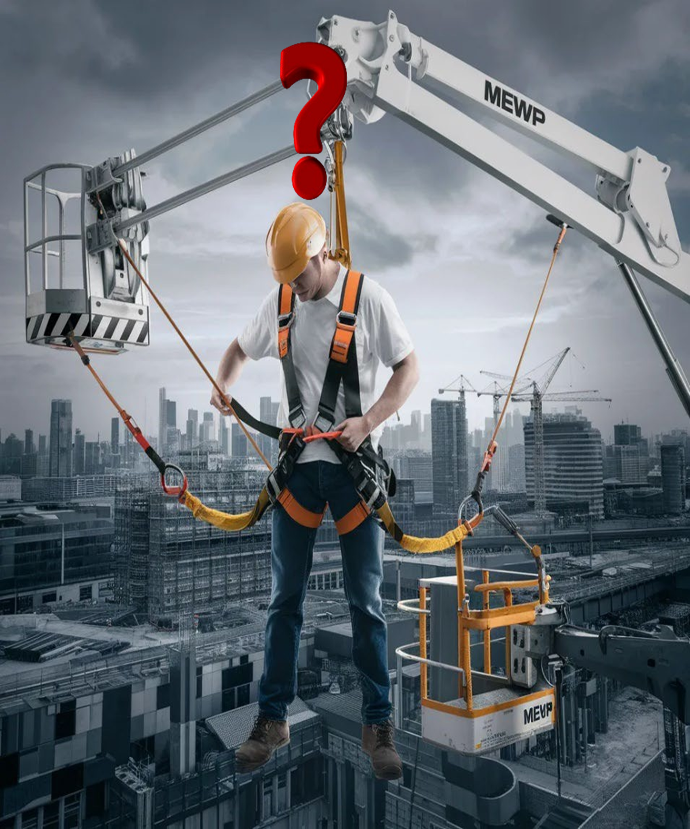
Now, when it comes to Group "b" MEWPs (boom), different opinions and divergences between standards and requirements of manufacturers of both platforms and fall protection systems begin to emerge.
NOM-009-STPS-2011
In the particular case of the lifting industry in Mexico, the competencies for the operation of MEWPs are described in this standard, where section 8.4.1 states the following:
"The use of personal fall protection systems to interrupt falls from height shall be mandatory when working at height on:
a) Edges of roofs, terraces, viewpoints, galleries, or elevated fixed structures, as well as openings such as holes, wells, shafts, and vertical tunnels, where the placement of fixed barriers or lateral or perimeter protections is not possible, or personal restraint systems are not used."
This section, referring to fixed structures, makes the caveat that individual fall arrest or fall restraint systems are mandatory whenever the placement of fixed barriers (e.g., guardrails) is not possible or restraint systems are not used. These are precisely the primary and secondary fall protection systems present in MEWPs, although they are certainly not fixed structures.
However, subsequently (section d), it is clearly established that fall arrest systems are mandatory for suspended scaffolds or lifting platforms. In other words, specifically fall arrest systems, not restraint systems.
Despite to the above, we should advocate for the use of restraint systems to prevent the fall in the first place, in line with the hierarchy of risks.
Later, the aforementioned standard indicates in section 11.5:
"During the operation of lifting platforms, the following must be complied with:
Workers working in the basket or work platform use personal fall protection systems, anchored to the devices provided and installed within the platform itself, as well as for other risks to which they are exposed due to the nature of the activities to be carried out, or the place where these will be carried out."
In this latter section, it is not detailed whether the personal fall protection system will be used to arrest the fall or could be a restraint system; furthermore, it indicates that other risks present should be considered. Could the "catapult" effect be among them?
According to the description, the Mexican standard NOM-009-STPS-2011, the basis for the competencies to operate MEWPs in this country, is not entirely clear about the ideal system for working on Group "b" equipment.
If we consult any international regulations on the design and operation of MEWPs, such as ANSI and UNE standards, we find the following:
ANSI A-92-20 : 2021
"4.6.4 Anchor Points
4.6.4.1 All MEWPs must provide a single type of anchorage for connecting fall protection devices. Group B MEWPs must be equipped only with fall arrest anchorages. Group A MEWPs may be equipped with both fall restraint and fall arrest anchorages.
4.6.4.3 Each fall arrest anchorage used as part of a fall arrest system must be capable of supporting a static force of 16 kN (3,597 lbf) for each person allowed by the manufacturer on the anchorage without reaching ultimate strength. This strength requirement applies only to the anchorage and its attachment to the MEWP in all possible load directions."
Therefore, for equipment manufactured from 2021 onwards under this standard, it is possible to use fall arrest systems for Group "b" MEWPs. However, on the one hand, these will not prevent the projection of the platform in the event of a "catapult" effect, and on the other hand, the anchorage points with a 16 KN resistance do not have the required strength by most Fall Protection Equipment manufacturers (22.2 KN).
Additionally, 1.6 tons (16 KN) is certainly enough to overturn the MEWP if loaded accordingly, since the safe working load capacity will be much lower than this.
UNE EN-280-1: 2023
"4.6.14 Anchorage
Anchorage(s) must be provided for the connection of personal fall protection systems. The anchorage device(s), anchorage point(s), and mobile anchorage point(s) must be designed to retain the individual protection equipment and ensure that it cannot be disconnected involuntarily if correctly conected.
d) For single-person use, each anchorage must be able to withstand a static force of 6 KN without reaching the breaking load (this is expected to increase in the next update of the standard. It was considered that 6 kN was too low, it will be around 8.04 kN for each anchor point). For anchorages rated for more than one person, the strength requirement (e.g., static force) must be increased by 20% for each additional person. This strength requirement should only apply to the anchorage and its attachment to the MEWP in all possible load directions and should not be considered for stability calculation and testing."
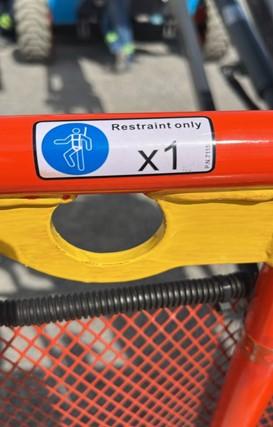
From the above, we can deduce that in platforms manufactured under the UNE-EN-280-1 standard, it is not yet possible to use fall arrest equipment due to the limited resistance of the anchorage points, and we must focus on keeping operators inside the basket through restraint systems. Another point to consider is that UNE does not consider dynamic fall testing with the anchor point.
Manufacturers' Recommendations in North America
Genie states on its official website: Clic para ver el artículo.
""During movement in the stored position and whenever the platform height is below the calculated total fall distance (or when above the calculated total fall distance) for each operator and occupant: The operator and all occupants must wear a full-body harness with a fall restraint system or a maximum 6-foot self-retracting lanyard (approved for use on an AWP by the manufacturer); -or A full-body harness with a double lanyard system (fall arrest and fall restraint); The fall restraint lanyard must be used during movement in the stored position and when the platform height is below the calculated total fall distance. The fall arrest lanyard can be used when the platform height is above the calculated total fall distance and when all other factors have been considered. It is no longer acceptable to place two double locking hooks on a single D-ring. When using a double lanyard system, such as the one mentioned here, AWP occupants must use a D-ring extension to separate the two devices. Never use a lateral D-ring for fall arrest."
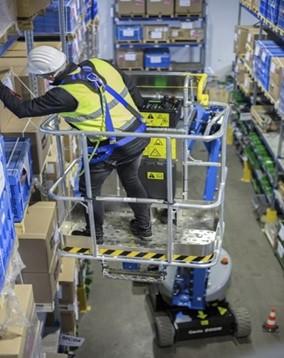
So, what's Genie's final conclusion? It's never acceptable to use a 6-foot shock-absorbing lanyard alone when operating a Group B AWP.
Consulting JLG, we find on their website translated into Spanish: Clic para ver el artículo.
“protection-equipment-on-jlg-mewps-in-north-america) “ANCHOR POINTS FOR RESTRAINT LINES The anchor points for restraint lines, as originally equipped or authorized by JLG for installation on JLG products, are designed and tested by JLG. These authorized anchor points meet or exceed the 5,000-pound (2273 kg) static pull test requirements set forth in OSHA Standard 1926.502, section (d)(15), and the anchor point testing criteria for restraint lines as required by applicable CSA B354 standards. Each authorized anchor point is specifically designed for use by one (1) person only. There must be one authorized anchor point for each additional person on the platform. When operated following the manufacturer's instructions and recommendations, JLG products will remain stable if a person falls from the platform while properly using an approved fall protection device (where the fall is limited to C feet or less) connected to a designated anchor point. For JLG products designated for use with a maximum restraint line length of 30 inches (7C cm), a fall restraint system would prevent a person from falling out of the platform.” In summary, JLG installs anchor points for fall arrest systems on their equipment."
Finally, what does IPAF recommend according to its website: Clic para ver el artículo.
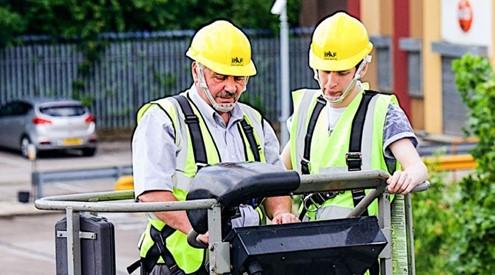
"Boom type platforms
When working from a boom type mobile elevating work platform (MEWP), it is strongly recommended to use a restraint line short enough to keep the user confined within the platform. The restraint line may contain an energy-absorbing device, as long as it is short enough to keep the user within the platform. This includes Static Booms (1b) and Mobile Booms (3b)."
Let's summarize: Required system according to each criterion:
| Requirement | Restraint | Fall Arrest |
| NOM-00G-STPS-2011 | NOT CLEAR | YES |
| ANSI A-92-20: 2021 | NO | YES (STARING FROM 2021) |
| UNE-EN-280-1 : 2023 | YES | NO |
| GENIE* | YES | YES |
| JLG | NO | YES |
| IPAF | YES | NOT RECOMMENDED |
- Genie suggests the use of both systems depending on the machine's configuration when operating.
So far, we've reviewed the operational and design regulations as well as the criteria of some platform manufacturers, but what do fall protection system manufacturers require? Here are some examples:
MSA Lifeline Manual:
“5.2. Anchors and Anchor Connectors
Anchors and connectors of the personal fall arrest system must be capable of withstanding a static load, applied in each direction permitted by the system, of at least 5,000 lbf (22.2 kN).”
Honeywell Miller SRL-P Retractable Line Manual:
“3.5 Installation in a lifting application: Both the ground-level anchor and guardrails must be able to withstand at least 5,000 lb (22.2 KN) per attached employee or form part of a complete personal fall arrest system that maintains a minimum two-to-one safety factor, under the supervision of a qualified person”
Condor Mini SRL-P Instruction Manual:
“4.7 Strength of personal fall arrest system anchor: an anchor selected for the MEWP application must have the strength to support a load applied in the direction permitted by the PFAS of at least:
a. Two times the maximum allowable arrest force when certification exists, or
b. 5,000 lbs. (22.2 Kn) in the absence of certification.”
This table shows the anchor point strength required by standards or established by platform manufacturers
:
| Standard/Manufacturer | Installed Anchor Point Strength |
|
ANSI A92-20:2021
|
16 kN
|
|
UNE-EN-280-1:2023
|
6 kN
|
|
GENIE
|
16kN
|
|
JLG
|
22.2kN
|
In this other table, we can see the anchor point strength required by some fall protection system manufacturers:
| Manufacturer | Required Strength |
|
MSA
| 22.2 kN |
|
Honeywell Miller | 22.2 kN |
| Condor | 22.2 kN |
So, what conclusion do we reach?
The most suitable device for most cases that can meet the requirements set forth in international standards, suggested by manufacturers, and detailed in Mexican regulations is a retractable fall arrest system with energy absorber and suitable for use in MEWPs (2:1 fall factor). This device will act as a restrictive system to keep the operator within the basket and as a fall arrest system in case of mishap or unforeseen circumstance.
Can this system be used even though not all anchor points are designed for 22.2 kN? The answer is yes, as long as they properly function as a restraint system, because they will never expose the anchor point to a force greater than 6 kN.
Increased inspection and maintenance requirements exist for retractable lifelines, requiring more training and responsibility from operators.
Another viable and likely less costly alternative, although not as functional, is the simultaneous use of hip restraint lines and fall arrest lines on the dorsal ring. This way, the ambiguity of the Mexican standard is avoided, and as in the previous case, the fall arrest line should not act under any circumstances.
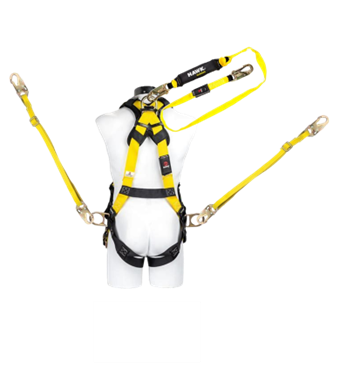
Finally, following the same principle as the retractable lifeline, a specially designed fall arrest line could be used, with a length that acts as a restraint line (for example, 0.9 m including the energy absorber). This way, we keep the operators within the basket, avoiding the risk of falls and without exposing the anchor points.
The fall arrest line should be verified to ensure it can be used in a restraint system, which should not be a problem given its greater strength.

Ramón A. Padrón Rojas
Instructor I/8255, ISI Rentas
CAPI Evaluator/00146
Acknowledgments:
Brian Parker
Technical and Safety Director IPAF, UK
For his contribution regarding IPAF recommendations and the content of standard UNE-EN-280-1:2023.
José Ramon Etxebarria Urrutia
Senior IPAF/TSPRL Instructor, CAPI Evaluator/00136 Plataformas Daryat, España
For his review and validation of the applicable legal framework.
Juan Ignacio Fernandes
Senior IPAF Instructor - I/6859, Ramírez TC, Uruguay
For his review of IPAF criteria regarding the use of lifelines.
Emilio Pernas
Senior IPAF Instructor IPAF – I/6713, Haulotte Group, Argentina
For his review and comparison with the standard in the southern cone.

